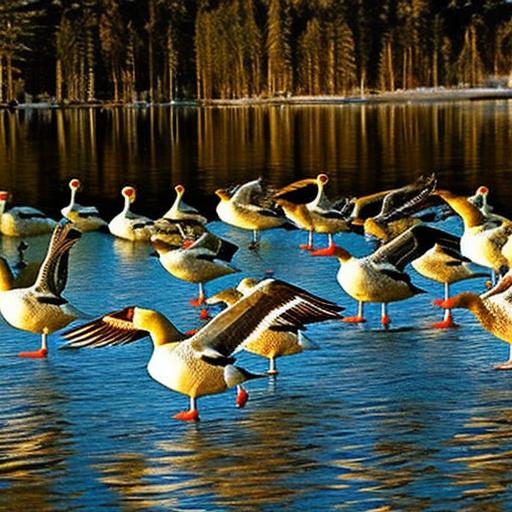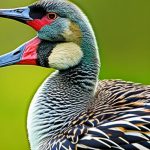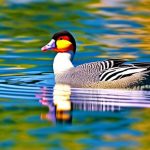Lakeshores are some of the most beautiful and serene places in nature. They provide a habitat for a wide variety of wildlife, including geese. These majestic birds are often seen gracefully gliding across the water or honking in the distance. However, it is important to understand their behavior and prevent them from nesting on the lakeshore. This article will explore the reasons why geese are attracted to lakeshores, their nesting habits, and the importance of preventing them from nesting.
Key Takeaways
- Geese near the lakeshore can be aggressive and territorial, especially during nesting season.
- Preventing geese from nesting on the lakeshore is important to avoid property damage and health hazards.
- Natural deterrents like planting certain vegetation or using predator urine can discourage geese from settling on the lakeshore.
- Physical barriers like fences or netting can effectively keep geese off the lakeshore.
- Decoys, sound-based deterrents, and visual deterrents like reflective tape can also be effective in deterring geese from the lakeshore.
Understanding the behavior of geese near the lakeshore
Geese are naturally drawn to lakeshores for several reasons. Firstly, lakeshores provide an abundant source of food for geese. They feed on aquatic plants, grasses, and insects that are found near the water’s edge. Additionally, lakeshores offer a safe haven for geese to rest and raise their young. The open space and proximity to water make it an ideal location for nesting.
Geese are known for their territorial behavior, especially during nesting season. They will aggressively defend their nests and young from perceived threats. This can lead to conflicts with humans who may unknowingly approach too close to a nest. It is important to understand this behavior and take steps to prevent geese from nesting on the lakeshore.
The importance of preventing geese from nesting on the lakeshore
While geese may be a beautiful sight on the lakeshore, their nesting habits can cause several issues. Firstly, geese can cause property damage by trampling vegetation and leaving droppings everywhere. Their droppings can also pose health hazards as they can contain bacteria that can contaminate water sources and cause diseases.
It is also important to note that harming geese or their nests is illegal in many areas due to their protected status under wildlife conservation laws. Therefore, finding humane solutions to prevent geese from nesting on the lakeshore is crucial.
Natural deterrents for geese on the lakeshore
One method of deterring geese from nesting on the lakeshore is through natural means. Planting certain vegetation, such as tall grasses or shrubs, can create an unappealing environment for geese. They prefer open spaces where they can easily spot predators, so dense vegetation can discourage them from nesting.
Another natural deterrent is the use of certain scents that are unpleasant to geese. For example, the scent of grape extract or citrus can deter geese from an area. These methods are generally effective and have minimal drawbacks. However, they may require ongoing maintenance and monitoring to ensure their effectiveness.
Creating physical barriers to keep geese off the lakeshore
Physical barriers can be an effective way to prevent geese from accessing the lakeshore. Fences or netting can be installed to create a physical barrier that prevents geese from entering the area. These barriers should be at least three feet high to deter geese from attempting to fly over them.
While physical barriers are generally effective, they may not be suitable for all lakeshores. They can be expensive to install and may not be aesthetically pleasing in some areas. Additionally, they may require ongoing maintenance to ensure their effectiveness.
Using decoys to deter geese from the lakeshore

Decoys can be used as a scare tactic to deter geese from nesting on the lakeshore. Fake predators, such as coyotes or owls, can be placed near the lakeshore to create the illusion of danger. Other decoys, such as fake geese, can also be used to make the area appear occupied.
Decoys can be effective in scaring off geese, especially if they are moved periodically to create the illusion of movement. However, they may lose their effectiveness over time as geese become accustomed to their presence. Additionally, decoys may not be suitable for all lakeshores, especially if they are in heavily populated areas.
Implementing sound-based deterrents for geese on the lakeshore
Sound-based deterrents can be an effective way to scare off geese from the lakeshore. Loud noises, such as air horns or fireworks, can startle geese and make them feel unsafe. Predator calls, such as those of hawks or eagles, can also be used to create the illusion of danger.
Sound-based deterrents can be effective in the short term, but they may lose their effectiveness over time as geese become accustomed to the noise. They may also disturb other wildlife or nearby residents, so it is important to use them responsibly and considerately.
Using visual deterrents to keep geese away from the lakeshore
Visual deterrents can be used to scare off geese from the lakeshore. Reflective tape or scarecrows can create a visual deterrent that makes geese feel unsafe. These visual cues can make the area appear occupied or dangerous, discouraging geese from nesting.
Visual deterrents can be effective in the short term, but they may lose their effectiveness over time as geese become accustomed to them. Additionally, they may not be suitable for all lakeshores, especially if they are in heavily populated areas where visual cues may not be effective.
The role of landscaping in keeping geese off the lakeshore
Proper landscaping can play a significant role in deterring geese from nesting on the lakeshore. By planting certain vegetation that is unappealing to geese, such as tall grasses or shrubs, it creates an environment that is less attractive for nesting. Additionally, removing excess food sources, such as fallen berries or seeds, can discourage geese from frequenting the area.
Landscaping can be an effective long-term solution for deterring geese, but it may require ongoing maintenance and monitoring to ensure its effectiveness. It is important to consult with a professional landscaper or wildlife expert to determine the best landscaping practices for deterring geese.
How to safely and humanely remove geese from the lakeshore
If geese have already nested on the lakeshore, it is important to find safe and humane methods of removing them. One method is egg addling, which involves shaking or coating eggs with a substance that prevents them from hatching. This method does not harm the geese but prevents their population from increasing.
Another method is relocation, which involves capturing and moving geese to a more suitable habitat. It is important to work with professionals who are experienced in handling and relocating geese to ensure their safety and well-being.
Working with local authorities to manage geese populations on the lakeshore
Managing geese populations on the lakeshore requires cooperation and involvement from local authorities. They can provide guidance on legal implications and regulations regarding geese management. Additionally, they can help coordinate efforts with other community members to implement effective solutions.
Community involvement is crucial in managing geese populations on the lakeshore. By working together, residents can share knowledge, resources, and experiences to find the most effective and humane solutions.
Understanding the behavior of geese and finding humane solutions to prevent them from nesting on the lakeshore is crucial for maintaining the beauty and health of these natural habitats. By implementing natural deterrents, creating physical barriers, using decoys, implementing sound-based deterrents, using visual deterrents, and landscaping appropriately, it is possible to deter geese from nesting on the lakeshore. Additionally, safely and humanely removing geese from the lakeshore through methods such as egg addling or relocation is important. By working with local authorities and the community, it is possible to manage geese populations on the lakeshore effectively and protect these valuable habitats for future generations.
If you’re looking for ways to keep geese off your lakeshore, you might find this article on Poultry Wizard helpful. They provide valuable insights and tips on how to care for goslings, which can be applied to managing geese populations near water bodies. Check out their article on how to care for goslings to learn more about effective strategies for dealing with geese in lakeside environments.
FAQs
What are the reasons for keeping geese off lakeshore?
Geese can cause damage to the environment, create health hazards, and disturb the peace and tranquility of the area.
What are some effective ways to keep geese off lakeshore?
Some effective ways to keep geese off lakeshore include using decoys, installing fencing, using noise deterrents, and using natural repellents.
What are some natural repellents that can be used to keep geese off lakeshore?
Some natural repellents that can be used to keep geese off lakeshore include planting tall grasses, using grape concentrate, and using predator urine.
What are some noise deterrents that can be used to keep geese off lakeshore?
Some noise deterrents that can be used to keep geese off lakeshore include using air horns, banging pots and pans, and using bird distress calls.
What are some things to avoid when trying to keep geese off lakeshore?
Some things to avoid when trying to keep geese off lakeshore include feeding the geese, using harmful chemicals, and harming the geese in any way.
Meet Walter, the feathered-friend fanatic of Florida! Nestled in the sunshine state, Walter struts through life with his feathered companions, clucking his way to happiness. With a coop that’s fancier than a five-star hotel, he’s the Don Juan of the chicken world. When he’s not teaching his hens to do the cha-cha, you’ll find him in a heated debate with his prized rooster, Sir Clucks-a-Lot. Walter’s poultry passion is no yolk; he’s the sunny-side-up guy you never knew you needed in your flock of friends!







